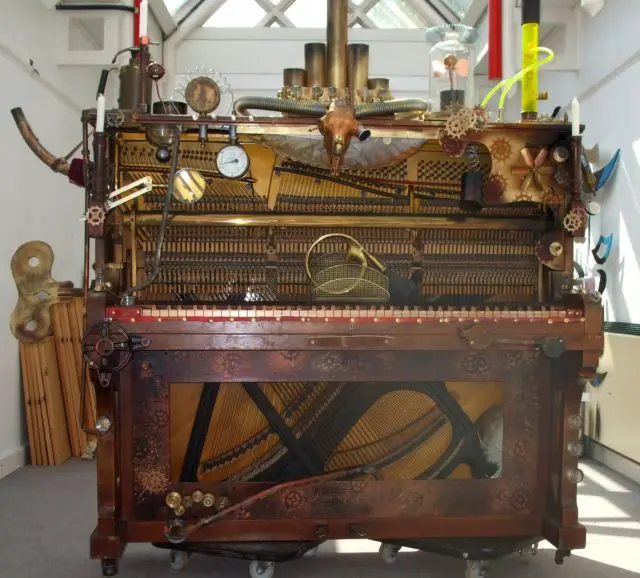soooo....a steampunk synthesizer?

I'm pretty sure I'll never make it - eheh, I'm not an iron / wood artisan at all, maybe I have a hammer somewhere, but nothing else. You can't extemporize, to make something like EFP as hardware, you must be a proven artisan, you have to know exactlywhat you're doing...
Not a fully functional, 3d-ray-tracing-rendered-and-animated model (too much time consuming
Kidding? Psh. Where do I sign up?

That kind of "noise" is due to factors that have NOT been modeled. Specifically, we're talking about the amount of *friction* between the fans/rotors and their pivots and hinges - and they are not meaningful for the sound production purpose.Tj Shredder wrote: ↑Mon Jun 24, 2019 11:21 am Can we take off the soundproof? I am sure it has a certain vintage quality. (Like the floppy noises from the iOS Fairlight app...; - )
With EFP the "air overblow" is certainly possible (to say the truth, it "overblows" very easily). But the "overblow" is due to the pressure and velocity of the gas particles (air) that are emitted by the engine, not to the friction of the mechanical components that move inside the engine.Tj Shredder wrote: ↑Mon Jun 24, 2019 3:23 pm Does that mean you can’t overblow it? I always thought distortion is the most fun in physical modeling... If I have a knob for the amount of energy, I certainly would like to hear a difference...

© KVR Audio, Inc. 2000-2024
Submit: News, Plugins, Hosts & Apps | Advertise @ KVR | Developer Account | About KVR / Contact Us | Privacy Statement